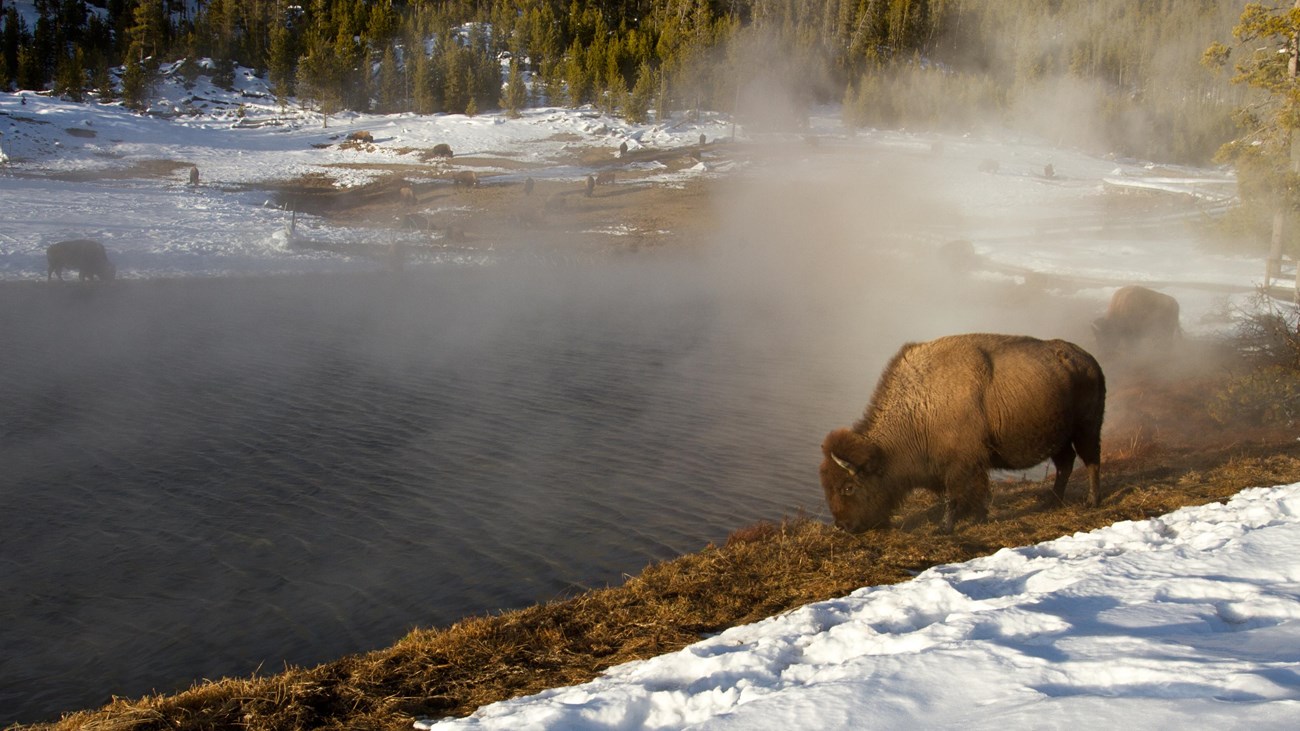
NPS/Neal Herbert Geological characteristics form the foundation of an ecosystem. In Yellowstone, the interplay between volcanic, hydrothermal and glacial processes, and the distribution of flora and fauna, are intricate. The topography of the land from southern Idaho northeast to Yellowstone probably results from millions of years of hot-spot influence. Some scientists believe the Yellowstone Plateau itself is a result of uplift due to hot-spot volcanism. Today’s landforms even influence the weather, channeling westerly storm systems onto the plateau where they drop large amounts of snow. The volcanic rhyolites and tuffs of the Yellowstone Caldera are rich in quartz and potassium feldspar, which form nutrient-poor soils. Thus, areas of the park underlain by rhyolites and tuffs generally are characterized by extensive stands of lodgepole pine, which are drought-tolerant and have shallow roots that take advantage of the nutrients in the soil. In contrast, andesitic volcanic rocks that underlie the Absaroka Mountains are rich in calcium, magnesium, and iron. These minerals weather into soils that can store more water and provide better nutrients than rhyolitic soils. These soils support more vegetation, which adds organic matter and enriches the soil. You can see the result when you drive over Dunraven Pass or through other areas of the park with Absaroka rocks. They have a more diverse flora, including mixed forests interspersed with meadows. Lake sediments deposited during glacial periods, such as those underlying Hayden Valley, form clay soils that allow meadow communities to outcompete trees for water. The patches of lodgepole pines in Hayden Valley grow in areas of rhyolite rock outcrops. Because of the influence rock types, sediments, and topography have on plant distribution, some scientists theorize that geology also influences wildlife distribution and movement. Whitebark pine nuts are an important food source for grizzly bears during autumn. The bears migrate to whitebark pine areas such as the andesitic volcanic terrain of Mount Washburn. Grazing animals such as elk and bison favor the park’s grasslands, which grow best in soils formed by sediments in valleys such as Hayden and Lamar. The many hydrothermal areas of the park, where grasses and other food remain uncovered by snow, provide sustenance for animals during winter. 
Greater Yellowstone Ecosystem
Yellowstone is the heart of one of the largest, nearly intact temperate-zones on Earth. |
Last updated: April 18, 2025
